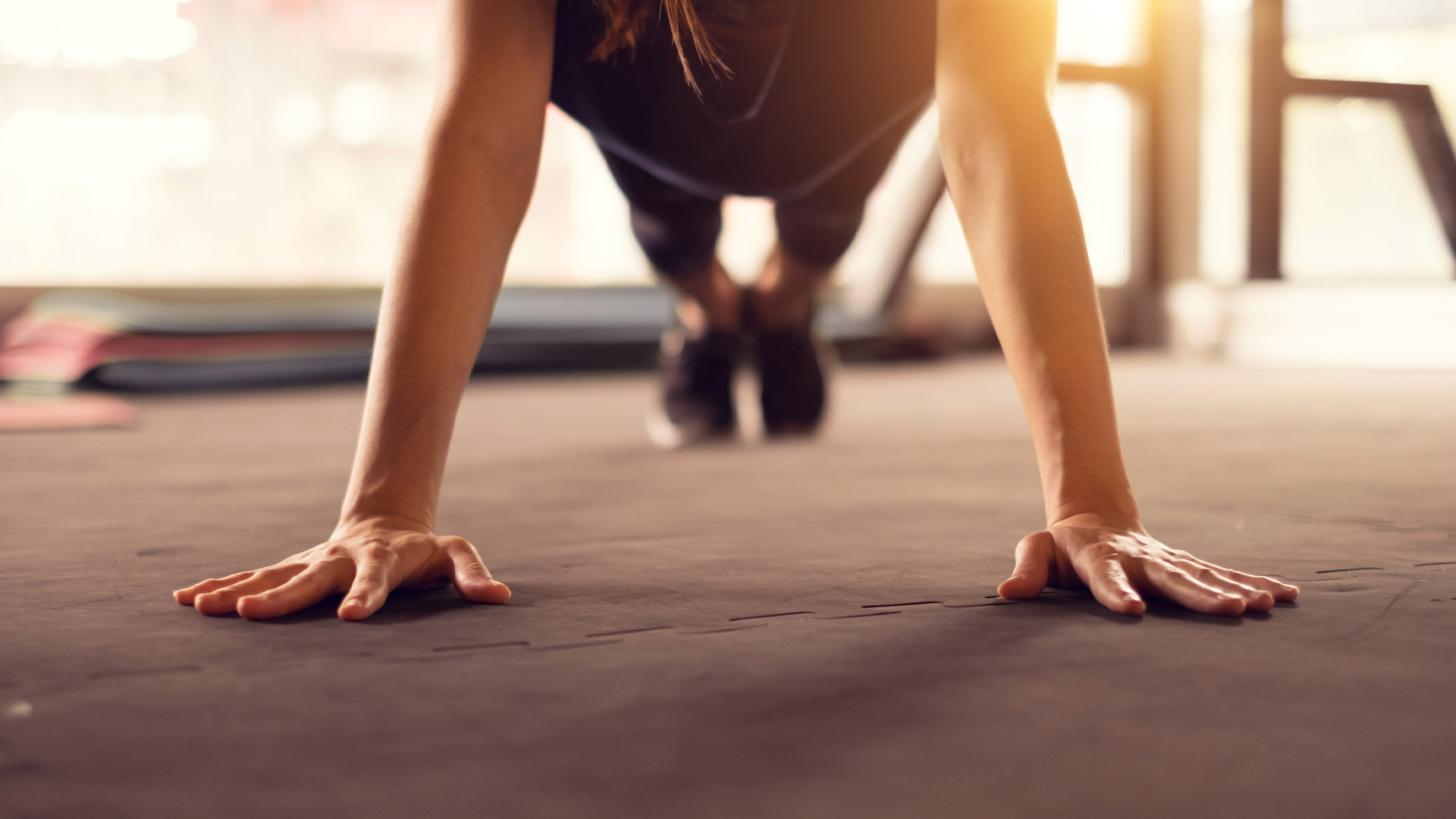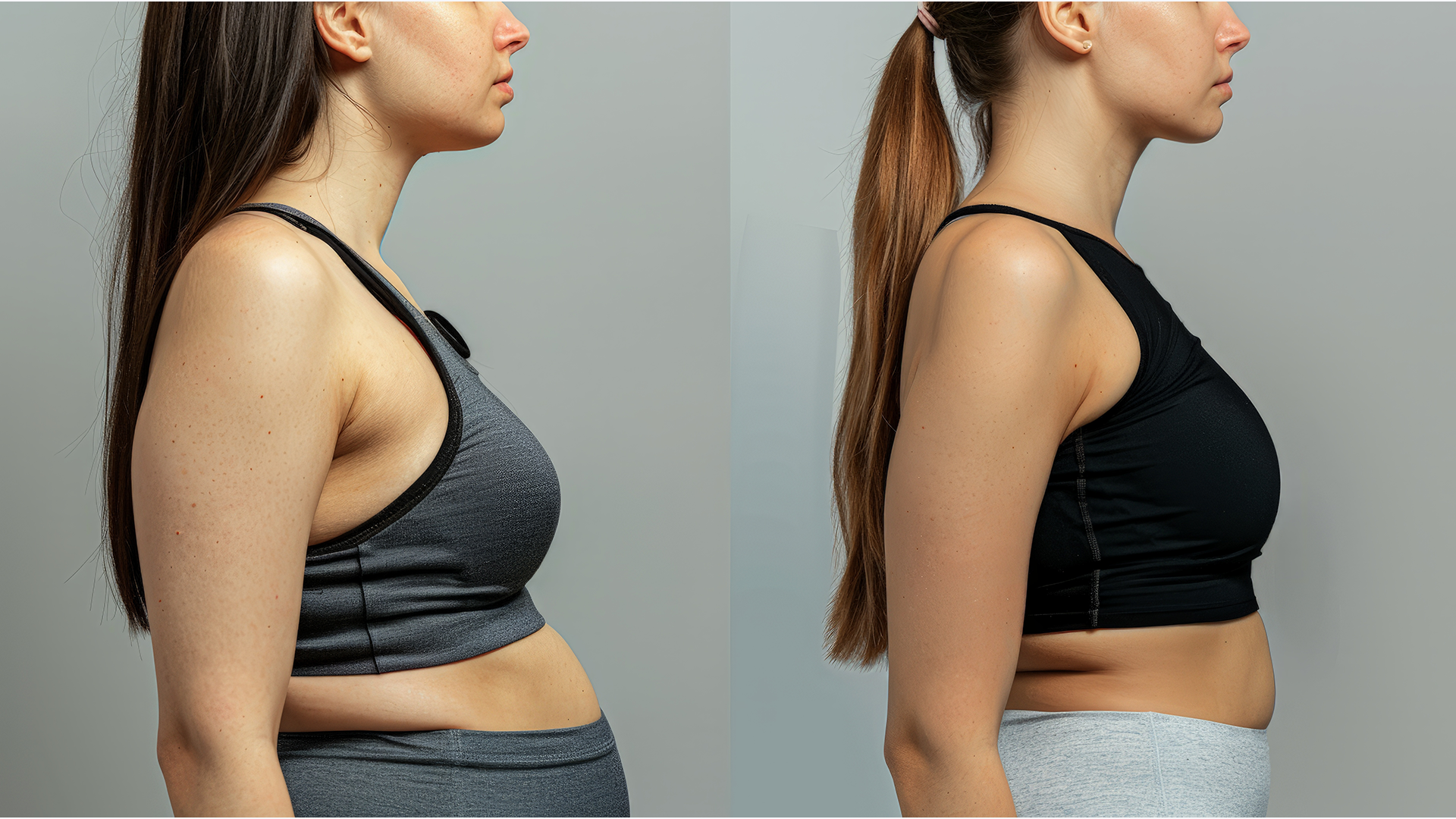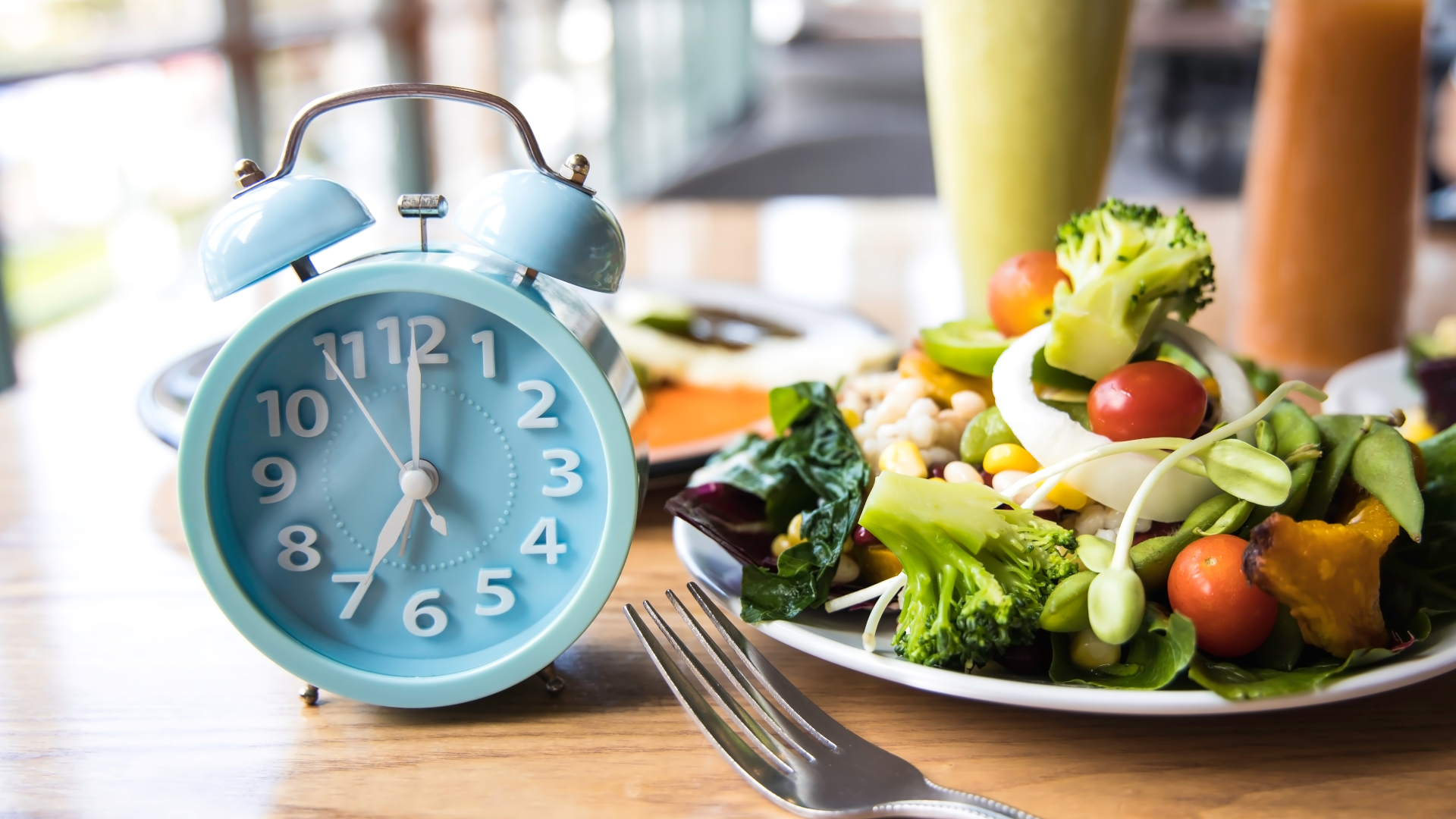Things you’ll learn in this blog
|
We’ve covered a whole lot of information together recently. We’ve looked at:
- Different body types and how to recognize yours
- How to use approach weight loss for your somatotype
- How to calculate the amount of calories you should be eating
- The best macro split for your body type and goals
- What kinds of foods you should be eating to lose weight
- How to put together a healthy, fat-burning meal plan
- The best supplements to complement your diet
Now, we can look at the next part of your weight-loss plan: exercise.
Exercising for weight loss
No matter how perfectly you calculate your calories and stick to your macros, without exercise, you can only get so far.
Yes, you can burn fat and shed the pounds through diet alone, but your progress will likely stall at a certain point if your activity levels aren’t equal to it.
Moving your body will improve your results and provide another avenue to boost your health and speed up weight loss.

But before we dive into how to build an exercise routine to meet your goals, let us briefly set your mind at ease.
If you’re completely new to exercising, there’s no need to worry. We’re not going to throw you in at the deep end, so to speak.
Exercise doesn’t have to mean countless hours lifting weights in a busy gym. It can, but it’s by no means a necessity. There are countless ways to increase your daily activity levels, and lifting heavy weights is not an optimal strategy for everyone.
It doesn’t have to be a lengthy process, either. You’re busy enough as it is – work, kids, family, social life, downtime and relaxation…
These are all important and take up a lot of time, so spending an hour or two a day on the treadmill probably isn’t realistic. Thankfully, this also isn’t necessary.
Whatever your daily and weekly schedules look like, there are ways to incorporate some form of exercise or movement into your life without sacrificing the important things – you just need to find activities that work for you. And we’ll show you how.
How often should you exercise?
How often you work out will depend on a few factors, such as:
- How much time you have
- What equipment and facilities do you have available? (Spoiler alert: you don’t need any if you don’t want them.)
- Your somatotype
- Your goals
- Any other personal factors (e.g. injuries, working towards a specific date or event, etc.)
So, once again, there is clearly not a one-size-fits-all approach to exercising.
For example, an ectomorph who has lots of free time and is in training for a half marathon will not train in the same way as a time-pressed endomorph who is looking to lose five pounds.
Unless you are actively working towards a specific goal or to a strict timeline, then the first aim of exercise is to just get moving.
If you’re moving, you’re burning calories. And if you’re burning calories, you’re losing weight.
Knowing this means that we can change our perception of exercise somewhat.
Walking your kids to school? That’s exercise!
Dancing around the house as you vacuum and tidy up? Exercise.
Strolling down to the park and exploring? Also, exercise.
These activities all count towards the amount of calories you burn over the course of a day, so don’t overlook them as a means of getting your heart rate up and your muscles working.
Having said this, performing actual sessions of exercise is the best way to go whenever possible.
You don’t need to exercise every day, but you do need to do some form of purposeful movement. If you’re completely new to exercising, then start off small – just half an hour for two days a week, then build from there.
The more intense and focused your workouts are, the more recovery time you’ll likely need, too. Going all out every single day is not advised – this can lead to burnout or injury if you aren’t careful. Rest days are important for your body to process what you’ve done and implement the changes necessary for you to go again.
To get a better idea of how frequently you should exercise and for how long, let’s take a look at some ways to burn calories and get you moving.
Cardio

Yes, we know, cardio… It can make your heart sink just to think of it. But it really doesn’t have to be boring!
There are plenty of ways to burn calories through aerobic exercise, such as:
- Jogging: If you find treadmill minutes seem to feel like hours, go for a run outdoors. You’ll get a dose of vitamin D, take in better views, and it’ll be easier on your knees if you aren’t on completely flat terrain.
- Swimming: If you’re lucky enough to have a pool nearby, or access to the beach or a lake, get yourself in the water. It has a low impact on your joints, so is particularly beneficial if you’re nursing an injury, going through muscular rehabilitation, or haven’t done cardio before.
- Cycling: Another lower-impact cardiovascular exercise, cycling also allows you to get out into the world and see new places (just be careful on those roads!).
- Rowing: As one of the more challenging cardio options, rowing can be a great all-over full-body workout. You’ll utilize your arms, back, legs, and core – so it’s a real calorie-burning muscle builder.
- Classes: These can be so much fun! Social classes like zumba, dance, spin, or aerobics benefit from a trained instructor leading you through what to do and having others around you to spur you on and keep you motivated.
- Sports: Team pursuits like soccer and rounders are really enjoyable ways to lose weight, as are individual competitive activities like tennis. Every game will be different and test you through various means, so you’re always kept on your toes.
Along with being excellent calorie burners, cardiovascular exercises like these benefit your whole body in multiple ways.
The American Heart Association recommends around 150 minutes of moderate-intensity aerobic exercise each week. This breaks down to just 30 minutes a day on five separate days, with two rest days – which feels extremely doable, doesn’t it?
Combine your workout with a podcast, music, or an episode of your favorite TV show, and the time will fly by.
As well as burning calories and raising your metabolism, cardiovascular exercise makes your heart and lungs stronger, and reduces your levels of cortisol – making it even easier to lose weight!
And despite the reputation cardio has for being a bit of a drag, the opposite is true – aerobic activity actually releases endorphins, which are often called the “feel-good hormones”. This can lead to additional mental health benefits, improved confidence, and better quality of sleep.
Resistance training

Resistance training also goes by the name strength training. Whilst this can mean hitting the gym and using the weights or resistance machines, it doesn’t have to. There are plenty of ways to create resistance for your muscles to work against, including:
- Bodyweight: The simplest starting point with strength training is to use your own body as the means of resistance. Push-ups, pull-ups, mountain climbers, burpees (which are not for the faint of heart), squats, lunges, planks, sit-ups, and countless other bodyweight exercises are all free, typically require no extra equipment, and can be done pretty much anywhere – making bodyweight training a great introduction point for beginners.
- Equipment: If you aren’t quite ready to make the jump to using weights but feel up to a more challenging bodyweight workout, then you can begin to add some specialized kit into your routine. Resistance bands, kettlebells, medicine balls, ankle and wrist weights, exercise balls – there are plenty of options that will work for any budget and won’t take up a lot of space in your home.
- Weights: If you’ve never lifted weights before, there’s no need to be intimidated or nervous. You can start as light as you need to – you could even just use an unloaded dumbbell or barbell until you perfect the motion required for a certain exercise. Using the correct form is one of the most important things to consider when lifting weights to achieve results and avoid injuries. Contrary to what some people think, lifting weights will not cause you to bulk up or develop a more “masculine” body (we’ll have more on this later in our section on exercise myths).
The sheer range of resistance exercises you can do, with or without weights or additional equipment, makes strength training a valuable weight-loss tool. Not only can you perform full-body movements as well as isolate specific muscle groups, but there are almost infinite modifications you can make that will tax your muscles in multiple ways and keep your workouts fresh and interesting. You could vary your rep and set count, rep speed, rest times, or overall workout time to reflect your level of ability and to measure your progress.
Resistance training is not just for building muscle or developing your strength, it is also a great overall calorie burner. You’ll increase your metabolic rate by lifting weights or performing bodyweight exercises, too, which means an increase in weight loss. Your posture will also benefit from this sort of training, as your muscles and core grow stronger and you correct any imbalances acquired as a result of slouching or sitting and moving incorrectly throughout the day.
HIIT

HIIT stands for high-intensity interval training. The idea here is to work incredibly hard for short periods, with brief rests in between.
Alternating intense and explosive bursts of exercise with quick rests (or bouts of lower-intensity movements) can benefit both cardio and strength training, but in a shorter time frame.
HIIT sessions typically last anywhere between 10 and 30 minutes – but you will be working at almost maximum capacity for this brief stint. Each round of exercise within a workout usually lasts from 15 seconds to 45 seconds, with rest periods after each one.
For example, if you were doing a HIIT workout on a treadmill, you could go all out for a 30-second sprint, followed by 90 seconds at a jogging or walking pace. You’d then repeat this several times to form a full workout. Similar cardio HIIT workouts can be done on stationary bikes or rowing machines.
Another option is to form a circuit of several bodyweight exercises. An excellent way to mix things up is by choosing several movements to perform vigorously for 20 seconds, with a 40-second rest before your next one (or whatever times you prefer). For example:
- 20 seconds of push-ups, 40 seconds rest
- 20 seconds of bodyweight squats, 40 seconds rest
- 20 seconds of mountain climbers, 40 seconds rest
- 20 seconds of bodyweight lunges, 40 seconds rest
- Repeat this circuit two or three more times
The key with any form of HIIT session is intensity (it’s right there in the name, after all). Remember you’re trying to fit a huge amount of effort into a small bracket of time – so make sure you work to your maximum ability during each active round.
There are lots of excellent HIIT-based resources that you can access online, including YouTube videos and workout articles that you can follow along with. HIIT also offers variety – you could change up the exercises, the timings, and the rest periods, or you could even introduce light weights into your routines if you really want to step it up and feel the burn.
The quick-slow changes that you put your body through (such as increasing and decreasing your heart rate) don’t just lead to a rise in the amount of calories you burn, you’ll also continue to burn calories and experience a boost to your metabolism for longer than you would with other forms of exercise.
All in all, HIIT workouts take less than half an hour out of your day and don’t have to involve any equipment or gym machines, so it really is a fantastic and efficient option for when you’re pushed for time.
Creating your workouts
Whether you’re working out using your own body weight or using equipment and machines, you’ll have countless options at your disposal. This is great news all around, as it means you can lose weight by doing activities that you actually enjoy!
You’ll be able to change it up as you improve your fitness and stamina, as well as vary your sessions so that you avoid becoming bored or underwhelmed by your workouts. Maintaining your enthusiasm and interest levels will keep you motivated and on the road to weight loss.
Here are a few final things to remember when designing your workouts that will ensure you’re enjoying yourself and safely making progress.
- Go at your own pace – the goal during a workout is to challenge your body so that you burn calories and work your muscles, but take care not to overdo it. Your limits will differ from another person’s, so stay within range of your own abilities. Don’t injure yourself by trying to keep up with anybody else. Be realistic about what you can achieve, particularly when you’re starting out and exploring what you can and can’t do yet.
- Warm up first – don’t go diving straight into a workout without warming up your body beforehand. Get the blood flowing and your muscles loose by stretching and performing lighter versions of the movements you’ll be undertaking in your main session. Five to minutes will do the trick.
- Cool down afterward – just as you prepared your body for a workout with a warm-up, you should then give yourself time to cool down and relax when you’re finished. Post-workout stretching will gradually bring down your elevated heart rate, as will some light jogging or walking. You’ll also improve your flexibility and prevent lactic acid from building up in your muscles.
- Keep pushing yourself – the more you exercise, the more you should be able to do, whether that be with longer cardio sessions, heavier weights, or more intense HIIT workouts. Continuing to challenge yourself is the way to sustain weight loss and increase your fitness levels.
- Measure your progress – the only way to know if you’re actually improving is to track what you do. Write down (or record digitally) what you’ve done to hold yourself accountable for getting fitter, stronger, and healthier. You should see an upward trend in your abilities and your results over time.
- Recover properly – take regular rest days so that your body can catch up and process the work you’ve done. Overworking yourself can lead to burnout or even injury, so make sure you allow your body the time and resources needed to get back up to speed. Get plenty of good-quality sleep, eat healthy foods, drink plenty of water, and supplement your diet where necessary. Do stay active on your rest days, though; don’t just stay in bed all day, watching TV and snacking. Go for a walk, try yoga or pilates, or do whatever low-intensity activities you enjoy that will get you moving and keep your blood flowing.
One final thing we want to cover before you get to your workouts is a few exercise myths.
Exercise myths
There are plenty of misconceptions regarding physical activities and weight loss, so we want to set the record straight on a few of the most prevalent myths to ensure that you don’t fall victim to these common misunderstandings.
MYTH: Women can accidentally bulk up by lifting weights.
Nope. Bulking up is difficult enough for lots of men, even though they might be hitting the gym multiple times per week and despite having higher levels of muscle-building hormones like testosterone than women have.

The truth is that lifting weights can help you burn calories, lose weight, and achieve lean muscle definition – you certainly won’t look like The Rock after a few dumbbell curls and barbell squats.
MYTH: You can spot reduce fat from certain areas of the body.
When you lose weight, you tend to lose it all over – or at least proportionately across the body. Yes, some of us are prone to problem areas, but you can’t specifically target them. If your body weight tends to accumulate across your abdomen, for example, it may appear that weight is only being lost from there at first, but it’s likely that there is just more to burn, and it is therefore more noticeable.
MYTH: Cardio is the best type of exercise to burn fat.
Cardio certainly can help you burn fat, but it is by no means the only way to do so. As we saw above, resistance training and HIIT workouts are two excellent alternatives to cardiovascular exercise. They all help you lose weight as they all burn calories.
This is great, as you can pick and choose what you do on any given day. Running, swimming, circuit training, weightlifting, yoga, dancing, and sports are all viable options, so you don’t have to just stick to cardio.
MYTH: Strength training is just barbells and weight machines.
There are lots of ways to build strength – weightlifting is just one of them. We’ve already covered some of the ways you can do so above, so don’t feel like you absolutely need to hit the gym to grow stronger. Anything that creates resistance for your muscles to push back against or pull towards yourself can achieve the same outcome – it just might take longer to do so.
MYTH: Sit-ups make your stomach flat.
Not so, we’re afraid. Sit-ups don’t specifically target belly fat, they’re more an exercise that can be used to build up your core strength. We all have abdominal muscles, but they are tucked away underneath our body fat, so sit-ups can only really tone up your abs once they have been revealed already.

Focusing on developing a full exercise routine like the ones mentioned above is a far better way to burn calories and lose inches from your waistline.
MYTH: You need to work out every day.
There is absolutely no rule that says you should be exercising every single day. In fact, rest days are important for recovering properly and letting your body get back to its best (see above).
So don’t feel guilty about taking a day off a couple of times each week. The important thing is to be generally active and burn more calories than you consume if you want to lose weight.
MYTH: If I exercise, I can have that donut, cheeseburger, bottle of wine, etc.
Unfortunately, eating junk food will undo some of your hard work. While you need to refuel after a workout, you should consume healthy whole foods that don’t contain harmful additives like trans-fats and sugars.

Don’t think of exercise as an excuse to be able to go overboard with snacks. Remember that diet and exercise go hand in hand – stick to your plan and stay within your calorie and macro counts.
Bringing it all together
That’s another aspect of your new and improved health and fitness journey that you’ll now be ready to implement. We’ve looked at calories and macros, healthy food options, supplements, workout plans, and exercise myths. Now, we can finally put it all together so that you can put your plan into action and burn some fat.
In our next and final article, we’ll sum up what we’ve been through so far, then give you all the tools you need to develop a mindset that will help you set realisDave Walkerjotic and achievable goals, keep you motivated, and prepare yourself for sustained weight loss success.an




